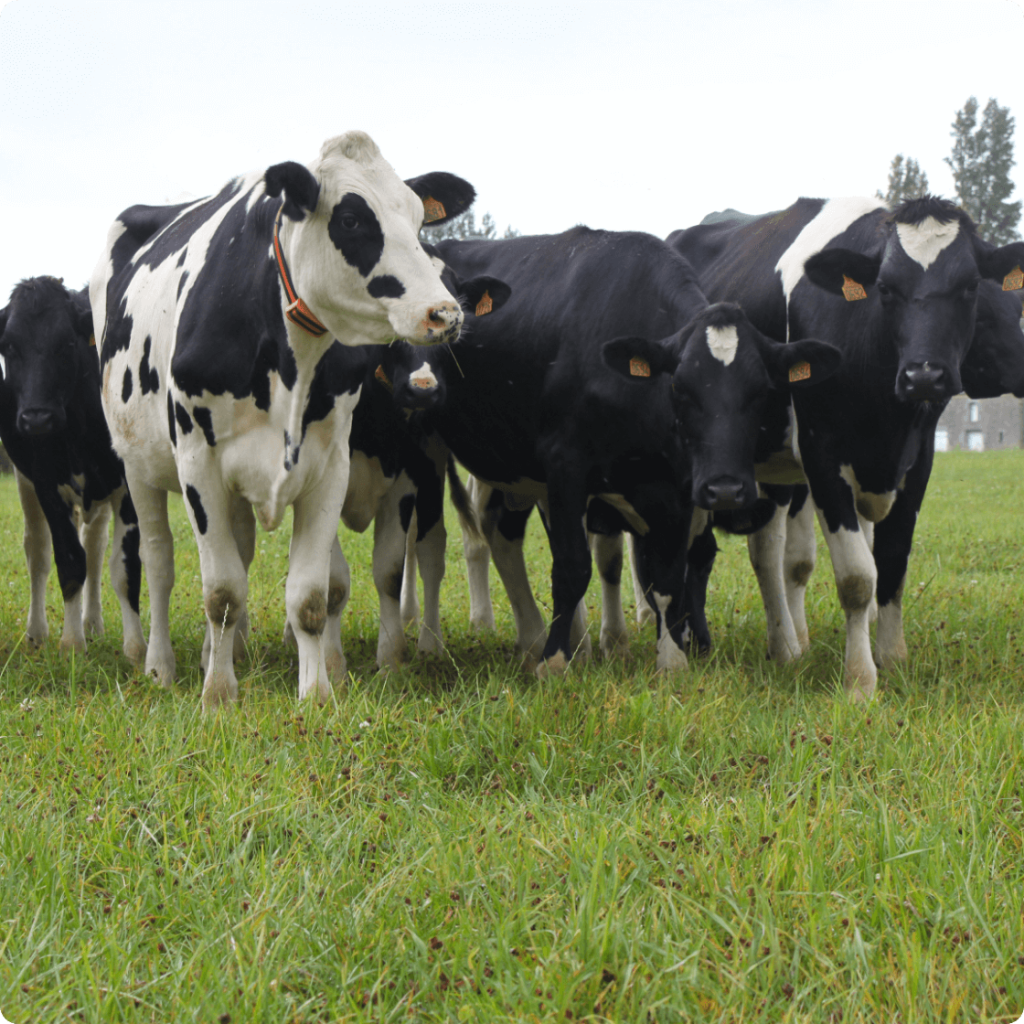Manage and anticipate
reproduction issues
This is the goal of Mozaë’s reproductive management and monitoring service
Target the animals in need
Reproductive management complements the heat detection service.
Here, you can take herd reproductive management a step further by anticipating breeding periods and responding promptly to cows with reproductive issues.
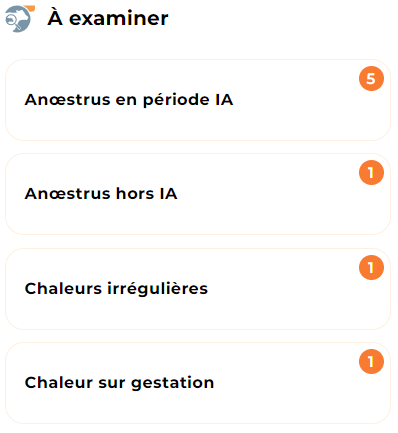
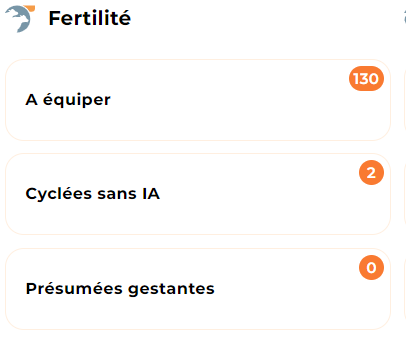
Anticipate animal fertility
Whether for heifers or cows, it sometimes happens that an animal is missed or actions are delayed.
Thanks to an indicator tailored to your breeding age practices and post-calving waiting period, you can access a real-time list of animals that need to be equipped promptly.
An animal cycling before breeding will have a higher chance of pregnancy at the first insemination. This list is available directly on your dashboard.
Act quickly on animals without heat
Animals not showing heat require early diagnosis to ensure their reproductive system is functional and sterile.
In any case, the sooner a diagnosis is made, the sooner you can adjust your action plan to help the cow become pregnant again.
In the reproductive dashboard, you’ll find a list of cows in this condition, along with key information to help make decisions.
This helps you avoid encountering animals that have gone a long time post-calving and may be culled due to delays.
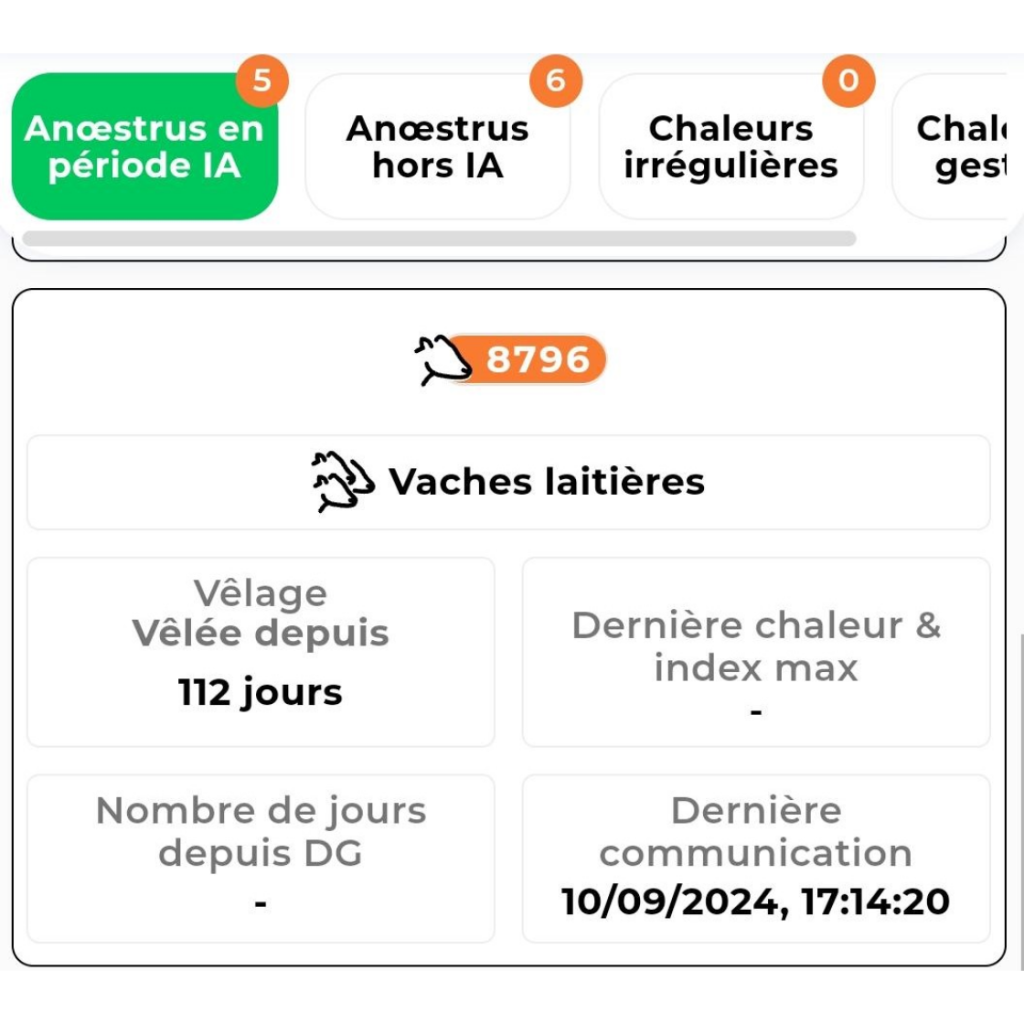
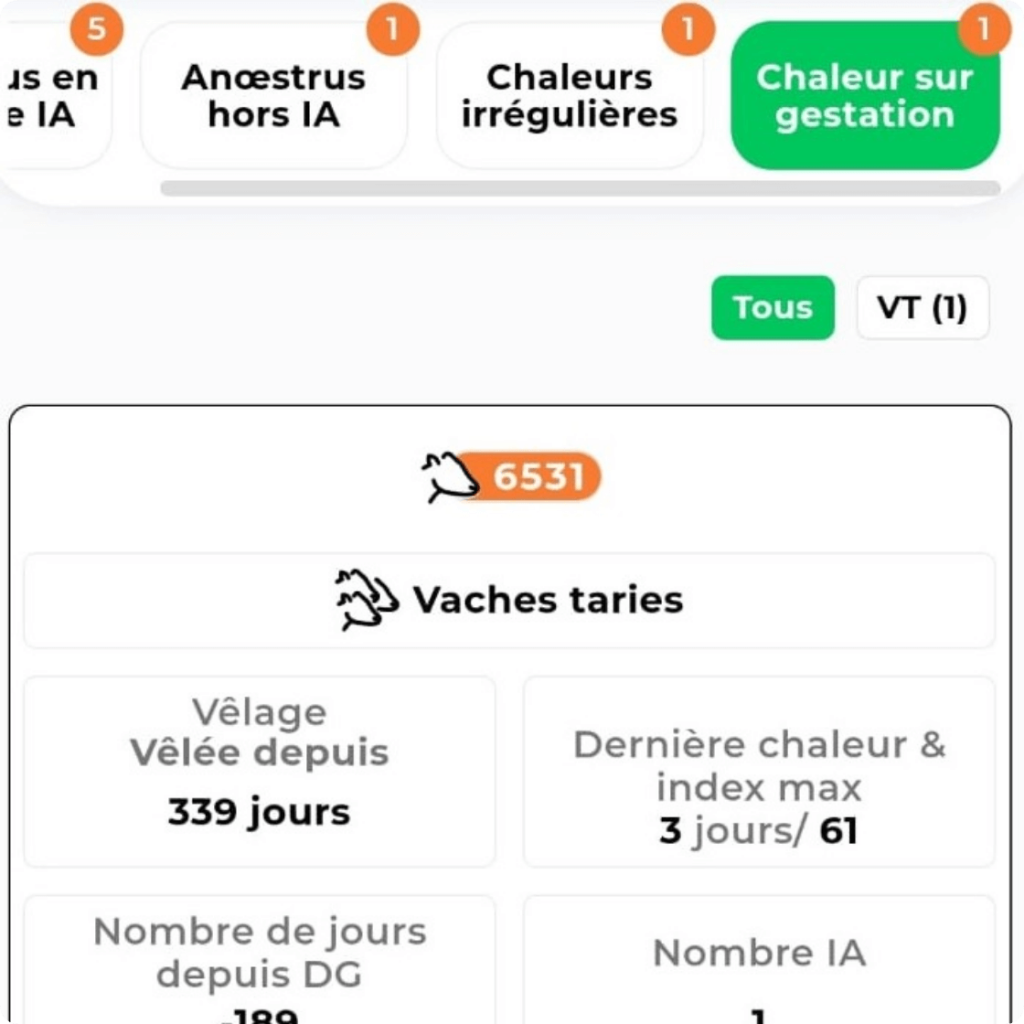
Detect cows that stop their pregnancy
A cow may terminate pregnancy early for various reasons.
Visual tracking of heat in a confirmed pregnant cow is generally less precise, raising many questions.
With early and accurate detection and assurance that there are no health issues, you can re-inseminate an animal if it returns to heat.
If the cow is further along in lactation or if the heifer is too old, this approach prevents you from keeping her for too long or drying her off only to later discover she is not pregnant, thus improving economic performance.
Improve economic results: lower turnover eate and fewer unproductive animals
Reproduction is the main lever for enhancing herd performance.
Short calving intervals allow you to achieve one calf per animal per year for beef cattle and capitalize on lactation peaks in dairy cows.
By anticipating needs, you reduce the percentage of unproductive animals and, in turn, lower the renewal rate by allowing more cows to become pregnant. This is especially beneficial, as raising a replacement heifer costs between €1,500 and €2,000, depending on the system.
